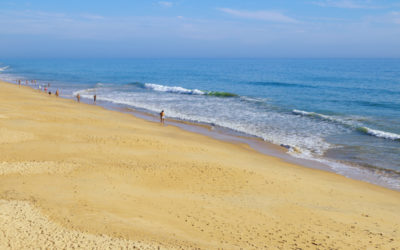The route to these beaches takes you through a large rural valley with farmlands dotted with olive, cork oak and carob trees, where you will see the unmistakable azure-winged magpies and hoopoes flying around, as well as old hydraulic devices such as aqueducts and norias. As you approach the sea, the lands become waterlogged; this is the Carcavai Stream overflowing and forming an extensive area of wetland with reeds, tamarisks and rushes. To the east (Trafal), the dunes extend all the way to the wetland area, the beach is large and, in the distance, the warmly-coloured cliffs and the pine groves are visible once again. To the west (Loulé Velho), the beach becomes narrower, the sea comes right up to the cliffs and the roots of some of the pine trees are becoming exposed as the soil is washed away. When the sea washes the sand away here, it uncovers Roman fish-salting tanks and the silt from an old estuary-lagoon system, remnants of a time when the sea level was considerably different to what it is today. There are also submerged ruins of a Carthaginian fishing settlement here.
Additional Information
Address: Quarteira
Postal Code: 8100
County: Loulé
VisitAlgarve URL: https://visitalgarve.pt/en/2261/praia-do-loule-velho-e-praia-do-trafal.aspx

